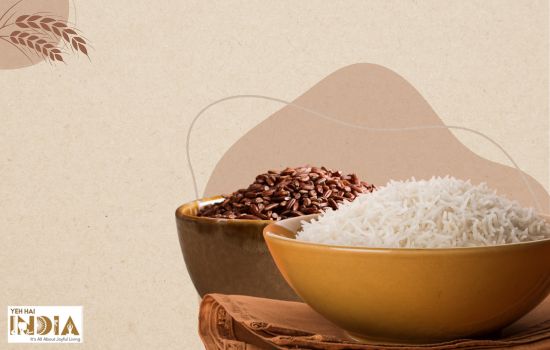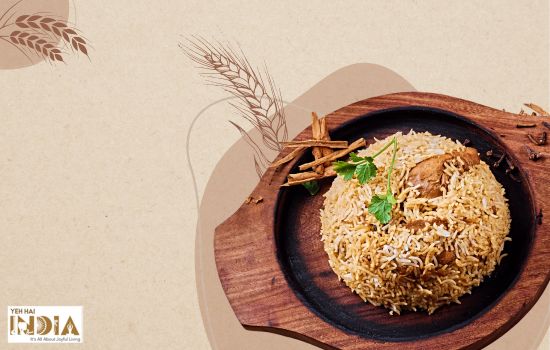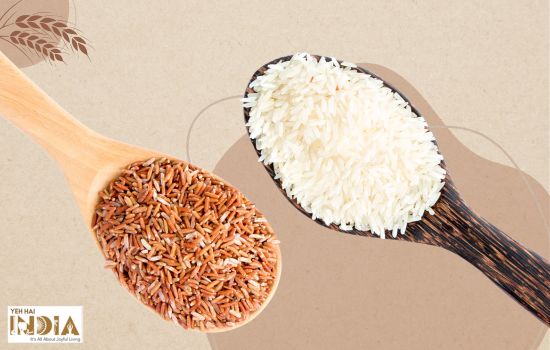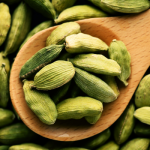Brown rice vs white rice is a contest that has never been settled. These two popular dietary choices have been consumed for centuries across various cultures. These grains, derived from the same source, differ in their processing methods and thus, nutritional composition.
While both types of rice are healthy and can be incorporated into a healthy diet, they have distinct characteristics that make them unique.
The purpose of this blog post is to provide an in-depth comparison of brown rice and white rice, focusing on their nutritional aspects and health benefits.
By exploring the differences between these two rice varieties, we aim to offer valuable insights that can help individuals make informed decisions about incorporating rice into their diet.
Whether you are seeking to optimize your nutritional intake, manage weight, or improve overall health, understanding the contrasting characteristics of brown rice and white rice will assist you in making dietary choices that align with your specific goals and preferences.
Let’s dive into the nutritional profiles and health benefits of both varieties to gain a comprehensive understanding of their impact on our well-being.
Brown Rice vs White Rice

Rice is a grass species’ seed. It is the most extensively consumed staple food in the world, with over 3.5 billion people globally consuming it. Rice comes in numerous kinds, including white rice, brown rice, basmati rice, jasmine rice, and many more.
Brown rice
The whole grain has been stripped of its inedible outer shell. The outermost shell or husk of this rice is shed during the processing, but the bran and germ layer stays, giving the rice its brown or tan tint. Brown rice has a chewy and little nutty texture.
White rice
The same grain as brown rice, but hulled (without the hull) and milled (without the bran layer). As the name describes, milling and polishing provide a smooth, clean, white appearance to this kind of rice, which gives it a smooth texture.
Recommended Article: Why Red Rice? Discover Varieties, Health Benefits and More
Cooking Brown rice vs White rice
Brown rice takes longer to cook as compared to white rice which is due to the presence of the bran layer in brown rice. It takes about 45 to 50 minutes to cook as it is less processed and contains a decent amount of fibre with a tough outer layer.
White rice takes about 15 minutes to cook which includes the time it takes to boil the water and then steam the rice at the end. This is much quicker as compared to brown rice, because of the high processing and milling involved.
It is generally said that brown rice has a lot more benefits to offer as compared to white rice. Let’s see if that is true.
Benefits of Brown Rice vs White Rice
| Nutrients | Brown Rice | White Rice |
|---|---|---|
| Physical Properties | Retains its bran and germ layers | Lacks bran and germ layers |
| Unique Nutrients | Beneficial compounds like antioxidants, phytochemicals, and essential fatty acid | Often enriched with iron and B vitamins to compensate for nutrients lost during processing |
| Health Benefits | Higher fibre content aids digestion, promotes satiety, regulates blood sugar levels | Source of energy, suitable for specific dietary needs for those recovering from illness or needing easily digestible carbohydrates |
| Vitamins | B vitamins (thiamine, niacin, vitamin B6) | Lower in vitamins |
| Minerals | Magnesium, phosphorus, selenium | Lower in minerals |
Fibre: Brown rice contains greater fibre due to the presence of the bran and germ layers, which contain fibre, vitamins, and minerals. Brown rice’s fibre promotes feelings of fullness and can help with weight management by lowering overall calorie consumption.
Glycemic Index: The glycemic index (GI) measures how quickly a food consumed raises the blood sugar levels in the body. The glycemic index of brown rice is 55, which is lower than 64 for white rice. Which leads to a gradual rise in blood sugar on consumption of brown rice.
Culinary preparation: This is another important factor which comes into consideration when choosing between brown rice and white rice.
As white rice has played a dominating role in various recipes and culinary traditions since ancient times, the majority of people are more comfortable using white rice for day-to-day recipes.
If the taste for brown rice is acquired, it can be incorporated and successfully used for almost every kind of recipe where white rice is usually preferred.
Recommended Article: Moong Dal Nutrition and Benefits: All you need to Know!
Nutritional Value of Brown Rice vs White Rice
| Nutrients (per 100g) | Brown Rice | White Rice |
| Calories | 111 | 130 |
| Carbohydrates | 23.5 grams | 28.7 grams |
| Protein | 2.6 grams | 2.7 grams |
| Fat | 0.9 grams | 0.4 grams |
| Fibre | 1.8 grams | 0.6 grams |
| Calcium | 10 mg | 8 mg |
| Iron | 1.4 mg | 0.4 mg |
| Magnesium | 44 mg | 5 mg |
| Phosphorus | 108 mg | 47 mg |
| Potassium | 143 mg | 35 mg |
| Zinc | 1.1 mg | 0.5 mg |
| Vitamin B1 | 0.07 mg | 0.03 mg |
| Vitamin B2 | 0.05 mg | 0.01 mg |
| Vitamin B3 | 2.3 mg | 1.6 mg |
| Vitamin B6 | 0.26 mg | 0.17 mg |
Note: Please note that these values are approximate and can vary depending on the specific variety and brand of rice.
Source: IFCT, (NIN and ICMR, 2017)
Deciding Factors for Brown Rice vs White Rice

A single food like rice cannot determine health. It is important to take into account the overall dietary pattern. Ingredients involved in meal preparation are considered as well, such as fruits, vegetables, healthy fats, and lean proteins.
No matter what kind of rice you eat, moderation in portions is essential for health. Pay attention to serving sizes and strive to put a range of nutrient-dense foods on a balanced plate.
It’s important to remember that both types of rice can be included in a balanced diet, even though brown rice may have some advantages over white rice in terms of health.
The secret is to bring attention to routine eating habits in general, which should include a range of nutritious foods while limiting the consumption of processed food items and ingredients that have invisible preservatives, unhealthy fats, and sugars.
FINAL VERDICT
Finally, the choice between white rice and brown rice comes down to personal preference and sustainability.
Brown rice can be a healthy choice if you appreciate its flavour and texture of it and find it easy to incorporate into your meals.
If you prefer the flavour of white rice, you can still lose weight and achieve your health goals by practising portion control and eating a well-balanced diet.
And when it comes to controlling the rise in blood sugar levels on the consumption of rice, there are multiple ways of doing it:
- By adding a protein source in the same meal, such as any kind of dal/ pulses.
- By following meal sequencing, i.e., initiating the meal with salads.
- By incorporating healthy fat, i.e., simply adding a little amount of ghee over your rice while eating.
KEEP THIS IN MIND!
The following points should be kept into consideration to make an informed decision on brown rice vs white rice:
- Nutritional Composition
- Glycemic Index
- Fibre Content
- Health Benefits
- Processing And Enrichment
- Taste And Texture
- Cooking Time
- Culinary Applications
- Dietary Preferences
Remember that long-term lifestyle adjustments, rather than specific dietary choices, are required for good health. It is critical to seek personalised guidance from a healthcare practitioner or qualified dietician based on your specific needs and goals.
Personal tastes, cultural factors, and dietary limitations can all influence whether you choose brown rice or white rice. It’s critical to select a dietary pattern that meets your taste and preferences while promoting health.
So, the ultimate decision while picking the variety of rice or any food should be based on personal choice and not market-driven or trend-influenced.
Also Read: 5 Healthy Breakfast Cereals to Try and 5 to Avoid










